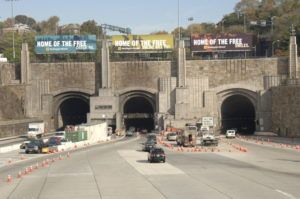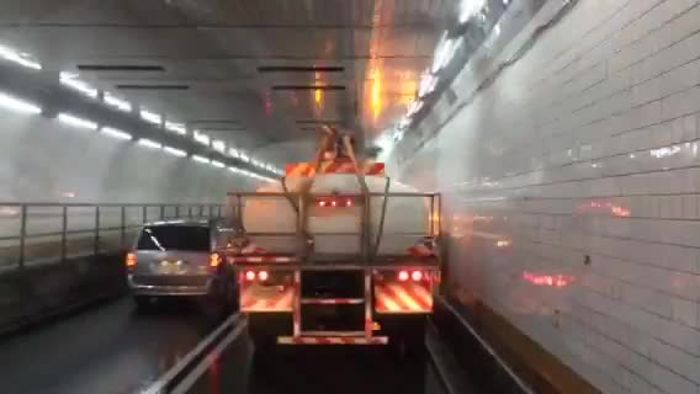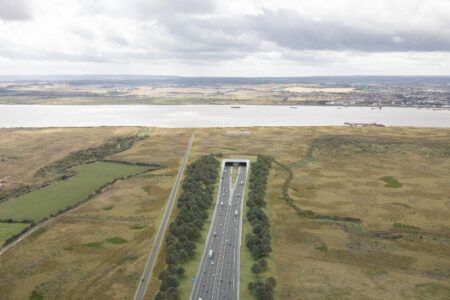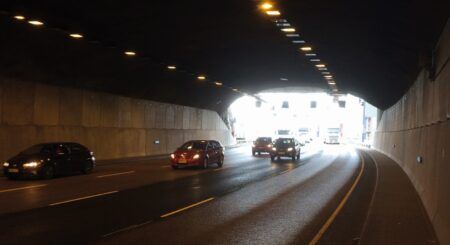Crowdsourced traffic information and navigation application company Waze has partnered with New York City’s Metropolitan Transportation Authority (MTA) Bridges and Tunnels Division and the Port Authority of New York and New Jersey (PANYNJ) to bring app connectivity to the city’s tunnels.
The company has deployed its Waze Beacons across the New York metropolitan area. The units are now live in the Holland Tunnel (above), Lincoln Tunnel (below), Queens-Midtown Tunnel and Hugh L Carey (Brooklyn Battery) Tunnel, enabling seamless tunnel navigation and putting an end to underground GPS signal blackouts. The NYC project marks the first time that multiple partners have collaborated to install Waze Beacons, enabling seamless navigation for all tunnel entrances and exits within a single city – in this case, Manhattan. The launch follows successful installations in nine cities around the world, including Chicago, Boston, Pittsburgh (all USA); Rio De Janeiro (Brazil); Paris (France); Florence (Italy); Haifa (Israel); Jihlava (Czech Republic); and Oslo (Norway).
Waze Beacons are an affordable, scalable,
open-source solution that enables better tunnel
navigation where GPS signals may drop out. Invented
in-house by Waze, Beacon installations began in 2016.
The small puck-like devices are powered by Eddystone battery technology and broadcast an open-standard
signal via Bluetooth, which takes over from GPS to provide location data when a vehicle passes through a tunnel.
Easy to install, the Beacons use open-source technology
to make third-party integration simple and seamless, transmitting messages directly to a smartphone or tablet
via Bluetooth.
“Bringing the Beacons to New York City marks a momentous occasion for our program,” said Gil Disatnik, inventor of the technology and now head of the Waze Beacons program. “This affordable, scalable open-source technology is easy to install and can instantly help with tunnel navigation. At Waze we are focused on leveraging technology to promote road safety and make it easier for people to navigate throughout the world.”
![]()
Veronique Hakim, MTA’s managing director, commented, “We are excited to bring this innovative technology to our tunnels as it will provide significant benefits to motorists by delivering uninterrupted real-time traffic data that enhances the customer experience. Together with cashless tolling, this further underscores our commitment to modernizing our facilities, so we can better serve customers now and for many years to come.”
PANYNJ’s executive director, Rick Cotton, said, “We are strongly committed to leveraging new technology to improve the customer experience for the tens of thousands of travelers who use our crossings each day. Last year, we launched our Crossing Time app that provides commuters with real-time traffic conditions at all agency bridges and tunnels. Now, we are activating new technology pioneered by Waze that will provide better GPS navigation capabilities for drivers as they drive through the Lincoln [below] and Holland tunnels and MTA tunnels. We will provide further 21st century technological tools to our customers as they are developed.”






